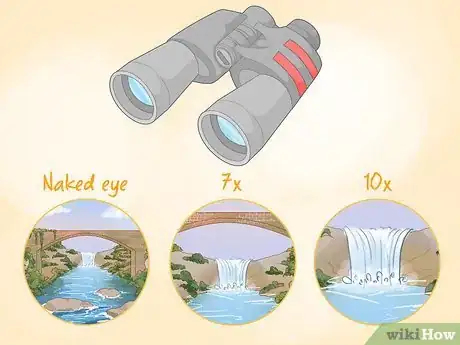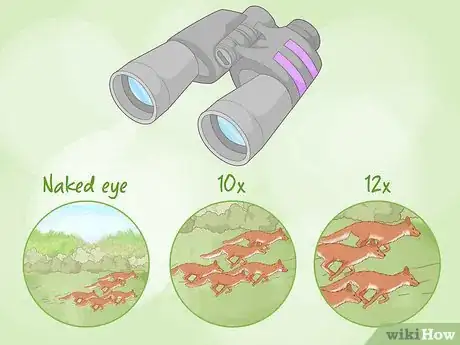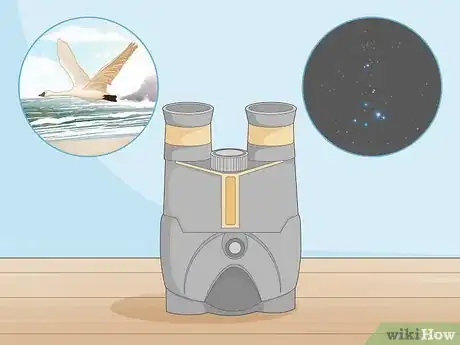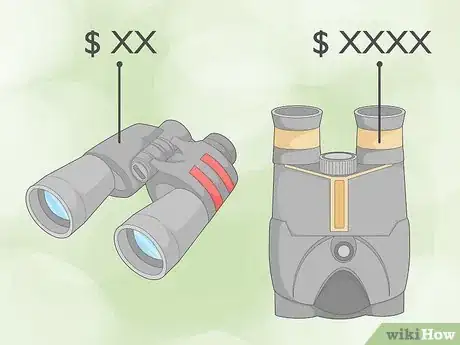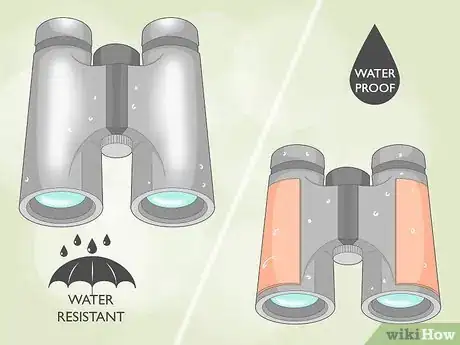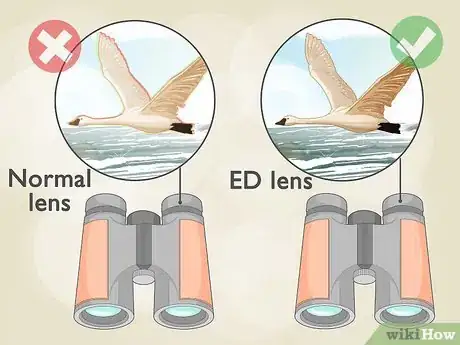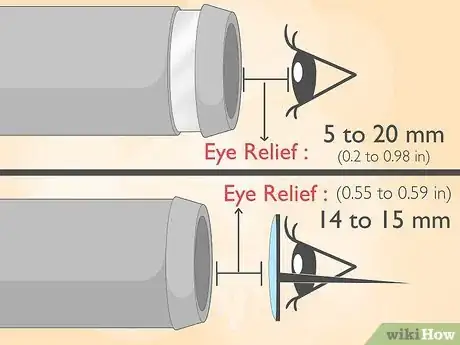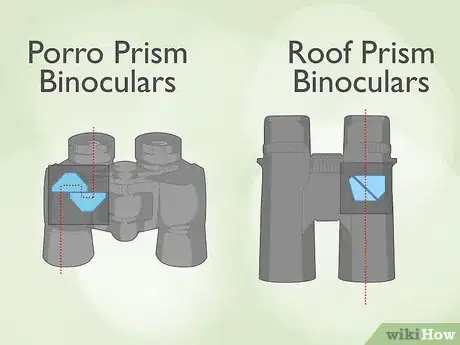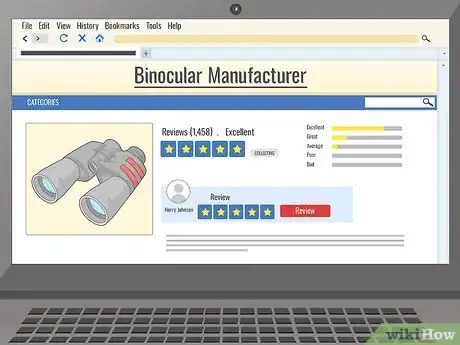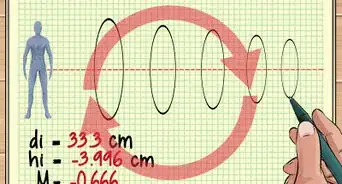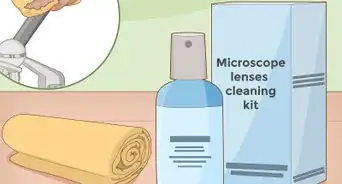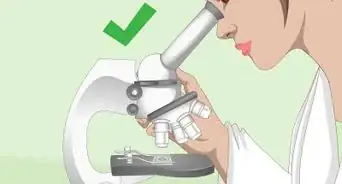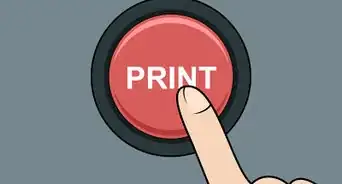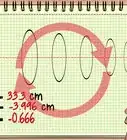This article was co-authored by Roger J. Lederer, PhD. Dr. Roger Lederer is an Ornithologist and the founder of Ornithology.com, an informative website about wild birds. Dr. Lederer has spent over 40 years teaching, studying, and writing about birds. He has traveled to over 100 countries to study birds. Dr. Lederer is an Emeritus Professor of Biological Sciences at California State University, Chico, and has been a Department Chair of Biological Sciences and Dean of the College of Natural Sciences. He has written more than 30 research papers and 10 books on birds and a textbook entitled “Ecology and Field Biology.” Dr. Lederer has consulted the BBC, National Geographic, National Public Radio, ABC News, the Guinness Book of World Records, and numerous other organizations and publications.
There are 9 references cited in this article, which can be found at the bottom of the page.
wikiHow marks an article as reader-approved once it receives enough positive feedback. This article received 30 testimonials and 94% of readers who voted found it helpful, earning it our reader-approved status.
This article has been viewed 453,291 times.
Binoculars can be used for hunting, bird-watching, astronomy or watching the action at sporting events or concerts. However, not all binoculars are created equal, and being able to choose the right pair for your particular hobby makes a big difference in the long run. By knowing what to look for in a pair of binoculars and how to evaluate them, you’ll be able to make sure you get the right type of binoculars for you.
Steps
Knowing What Type of Binoculars to Choose
-
1Choose binoculars with a 7x to 10x magnification for general use. The number that comes before the “x” when describing binoculars refers to the magnification factor, or how much closer objects will appear to be. If you just want binoculars for general use, rather than for a specific hobby, binoculars with 7x to 10x magnification are best.[1] These will give you adequate magnification for most activities and won’t be destabilized if your hand slightly shakes.[2]
- Binoculars are referred to with 2 numbers, such as 7 x 35 or 10 x 50. The second number is the diameter of the main (objective) lenses in millimeters; 7 x 35 lenses are 35 millimeters (1.38 inches) in diameter, while 10 x 50 lenses are 50 millimeters (1.97 inches) in diameter.
- While binoculars with relatively small magnification factors produce images that are less magnified than those produced by binoculars with higher magnification factors, these images will be sharper and your field of view (how widely you can see) will be wider. If you need a wide field of view, such as for viewing a football game from high seats, choose a lower magnification.
-
2Look for high magnification for long-range hunting. If you’re hunting in the mountains or in wide open ranges, you’ll want to use binoculars with larger magnifications, such as 10x or 12x. [3]
- Note that the higher the magnification of your binoculars, the dimmer the image will be. Although the image you see will be larger, your field of view will narrow and it’ll harder to keep the image focused. If you choose binoculars with 10x magnification or greater, get a pair with a tripod socket so you can mount and steady your binoculars when needed.
- If you’re hunting in a forested area, you may find that binoculars with a 7x to 10x magnification factor are more appropriate.
Advertisement -
3Prioritize larger lenses for bird watching or low-light activities. Binoculars with larger objective lenses have wider fields of view, which are better for finding and following birds when bird watching. They’re also able to gather more light, which is important in low-light activities such as hunting at dawn or dusk. If you're interested in astronomy, get as large an objective lense (70mm is common) and lowest magnification to see large dim objects like nebulae and galaxies like Andromeda (M31).[4]
- If you’re more interested in seeing the details on smaller birds at greater distances, then you may want to opt for binoculars with larger magnifications and smaller lenses.
- Note that the larger the lenses are, the more the binoculars will probably weigh.
- Generally speaking, standard-sized binoculars have objective lens diameters larger than 30mm, while compact-sized binoculars have lens diameters smaller than 30mm.
-
4Determine ahead of time what your price range will be. It’s generally true that the more expensive, top-of-the-line binoculars have higher image quality and are also more durable. However, there are also a lot of cheaper binoculars that are adequately durable and have decent optical quality. Thus, pick a price range that you feel comfortable buying binoculars at and don’t feel compelled to go beyond it.[5]
- Think about how you intend to use your binoculars; a pair you intend to keep at home to look out the window don’t need to be as durable as a pair you want to take hiking with you.
-
5Decide how heavy a pair of binoculars you can handle. As noted, high-magnification and large-lens binoculars weigh more than standard binoculars. If you plan to travel long distances or don’t have a lot of storage room, you may want to settle for less powerful but lighter binoculars.[6]
- You can compensate for the weight and stabilize the binoculars by mounting them on a tripod or with a strap that lets you carry them around your neck
- How you intend to use the binoculars is especially relevant here. If you plan to carry them around your neck while hiking, heavy binoculars may be a real burden.
-
6Consider waterproof versus water-resistant binoculars. If you don't plan on using your binoculars in bad weather or in conditions where they'll get wet very often, you can get by with water-resistant binoculars. If you plan to take them along whitewater rafting or skiing, get waterproof binoculars instead.[7]
- Note that waterproof binoculars are usually more expensive than water-resistant binoculars.
Evaluating a Pair of Binoculars
-
1Choose glass lenses for better quality images. Most binoculars have glass lenses, which generally provide better image quality. Glass also partially reflects the light that hits it, although this can be compensated for with the right coating. If image quality is your highest priority, make sure the binoculars you plan to buy have glass lenses.[8]
- Note that glass lenses are also typically more expensive than plastic lenses.
- Binoculars made with Extra-low Dispersion (ED) glass produce the most high quality image, though these are also one of the most expensive types of lens material used in binoculars.
- Lens coatings are described with the following codes: C means that only some surfaces have been coated with a single coating layer; FC means that all glass lens surfaces other have been coated; MC means that some surfaces have been coated with multiple layers; and FMC means that all glass lens surfaces have been coated with multiple layers. Multiple-layer coatings are generally superior to single coatings but add to the cost of the binoculars.[9]
-
2Opt for plastic lenses for durability. Plastic lenses might not give you the most quality image, but they’re much more rugged than glass lenses. If you intend to use your binoculars mainly outdoors and in rugged conditions where durability is an important factor, choose a pair with plastic lenses.[10]
- For example, binoculars with plastic lenses are the best choice for activities such as hiking and mountain climbing, or for children who are handling binoculars for the first time.
- Note that while plastic lenses are generally inexpensive, a set of plastic lenses that provide the same image quality as a set of glass lenses will cost more.
-
3Evaluate the eyepieces. The eyepiece lenses should rest a comfortable distance from your eyes, and even further if you wear glasses. This is called "eye relief" and normally ranges from 5 to 20 millimeters (0.2 to 0.98 inches). If you wear glasses, you'll need an eye relief of 14 to 15 millimeters (0.55 to 0.59 inches) or greater, as most eyeglasses rest from 9 to 13 millimeters (0.35 to 0.5 inches) from the eye.[11]
- Many binoculars include rubber eye cups around the eyepieces to help you seat the eyepieces over your eyes when using the binoculars. If you wear glasses, look for binoculars with eye cups that retract or flip out of the way.[12]
-
4Test the focusing function. Look at how closely you can focus the binoculars in the store and measure the distance between them and the object you're looking at. If you care about spotting tiny details from far away, you’ll need to make sure the binoculars have good focusing ability.[13]
- Binoculars focus in 1 of 2 ways. Most binoculars have a center-post mechanism, as well as a diopter corrector in case one of your eyes is stronger or weaker than the other. Waterproof binoculars, however, usually have individual focusing for each lenses, with controls on each eyepiece.
- To adjust binoculars to your eyes, close your right eye and focus your left eye on a distant object using the central focus.[14]
- Then close your left eye and use the focusing ring on the right eyepiece to focus your right eye. This compensates for the difference in strength of your eyes.[15]
- Some binoculars are "focus-free," with no ability to adjust the focus whatsoever. These binoculars can cause eyestrain if you attempt to focus on something closer than the pre-set distance.
-
5Look at the prism design to gauge how good the images will be. Most binoculars have their main lenses spaced wider than the eyepieces, thanks to the Porro prisms they use. This makes the binoculars larger but makes nearby objects appear more 3-dimensional. Binoculars that use roof prisms let the main lenses rest in line with the eyepieces, making the binoculars more compact.[16] But it is usually at the cost of image quality. However, roof prism binoculars can be made to deliver images of quality equal to Porro prism binoculars but at greater cost.[17]
- Less expensive binoculars use BK-7 prisms, which tend to square off one side of the image, while more expensive binoculars use BAK-4 prisms, which deliver more light and sharper, rounder images.
-
6Check out the manufacturer's reputation and guarantees. Consider how long the manufacturer has been in business and what other optical products they make, if any, as well as how they'll handle matters if the binoculars get damaged. Note as well whether the manufacturer offers a warranty for the binoculars.[18]
- If you buy an expensive pair of binoculars and they become damaged, having a warranty or guarantee from the manufacturer would make it much easier for you to get them replaced.
Community Q&A
-
QuestionWhat binoculars are good for bird watching?
 Community Answer8×42 is the standard. 10×42, 10×50 & 12×50 are good for details in smaller species at a distance. Compacts with a 30mm or greater objective lens size or any binocular with long eye relief and good close focusing ability also work.
Community Answer8×42 is the standard. 10×42, 10×50 & 12×50 are good for details in smaller species at a distance. Compacts with a 30mm or greater objective lens size or any binocular with long eye relief and good close focusing ability also work. -
QuestionUp to what distance could I see with a good binoculars?
 Samuel C. KingCommunity AnswerBinoculars don't increase how far you can see, they just make things look closer. So how far you can see with binoculars depends on how far you already can see based on your location.
Samuel C. KingCommunity AnswerBinoculars don't increase how far you can see, they just make things look closer. So how far you can see with binoculars depends on how far you already can see based on your location. -
QuestionWhat are the best binoculars if I have a budget of $350?
 Community AnswerMany factors influence individual requirements when budgeting, such as power desired, expense, intensity of image, zoom, weight, etc. Determine what your needs are and research binoculars that fit your needs to find the best one for your budget.
Community AnswerMany factors influence individual requirements when budgeting, such as power desired, expense, intensity of image, zoom, weight, etc. Determine what your needs are and research binoculars that fit your needs to find the best one for your budget.
References
- ↑ https://www.allaboutbirds.org/news/six-steps-to-choosing-a-pair-of-binoculars-youll-love/
- ↑ https://www.which.co.uk/reviews/binoculars/article/choosing-and-buying-the-best-binoculars/binocular-basics
- ↑ https://www.bestbinocularsreviews.com/hunting-binoculars.php
- ↑ https://www.allaboutbirds.org/six-steps-to-choosing-a-pair-of-binoculars-youll-love/
- ↑ https://www.allaboutbirds.org/six-steps-to-choosing-a-pair-of-binoculars-youll-love/
- ↑ https://www.outdooreyes.com/choosebinoculars.php3
- ↑ https://www.outdooreyes.com/choosebinoculars.php3
- ↑ https://www.telegraph.co.uk/gardening/tools-and-accessories/best-binoculars-bird-watching/
- ↑ https://gadgets360.com/science/features/how-to-buy-binoculars-for-birdwatching-2617544
- ↑ https://www.telegraph.co.uk/gardening/tools-and-accessories/best-binoculars-bird-watching/
- ↑ https://www.just-binoculars.com/binocular-buying-guide/
- ↑ https://gadgets360.com/science/features/how-to-buy-binoculars-for-birdwatching-2617544
- ↑ https://www.telegraph.co.uk/gardening/tools-and-accessories/best-binoculars-bird-watching/
- ↑ https://imaging.nikon.com/lineup/sportoptics/how_to/guide/binoculars/using/using_01.htm
- ↑ https://imaging.nikon.com/lineup/sportoptics/how_to/guide/binoculars/using/using_01.htm
- ↑ https://gadgets360.com/science/features/how-to-buy-binoculars-for-birdwatching-2617544
- ↑ https://www.which.co.uk/reviews/binoculars/article/choosing-and-buying-the-best-binoculars/binocular-basics
- ↑ https://www.outdooreyes.com/choosebinoculars.php3
About This Article
To choose binoculars, go with a pair that has 7x to 10x magnification for general use. If you plan to use your binoculars while hunting or to observe the night sky, look for higher magnifications like 10x or 12x. Binoculars with larger objective lenses have the widest fields of view, making them the best choice for bird-watching. If your concern is image quality, go with glass lenses. Buy binoculars with plastic lenses if durability is more important to you. For tips on evaluating weight and focus, read on!
